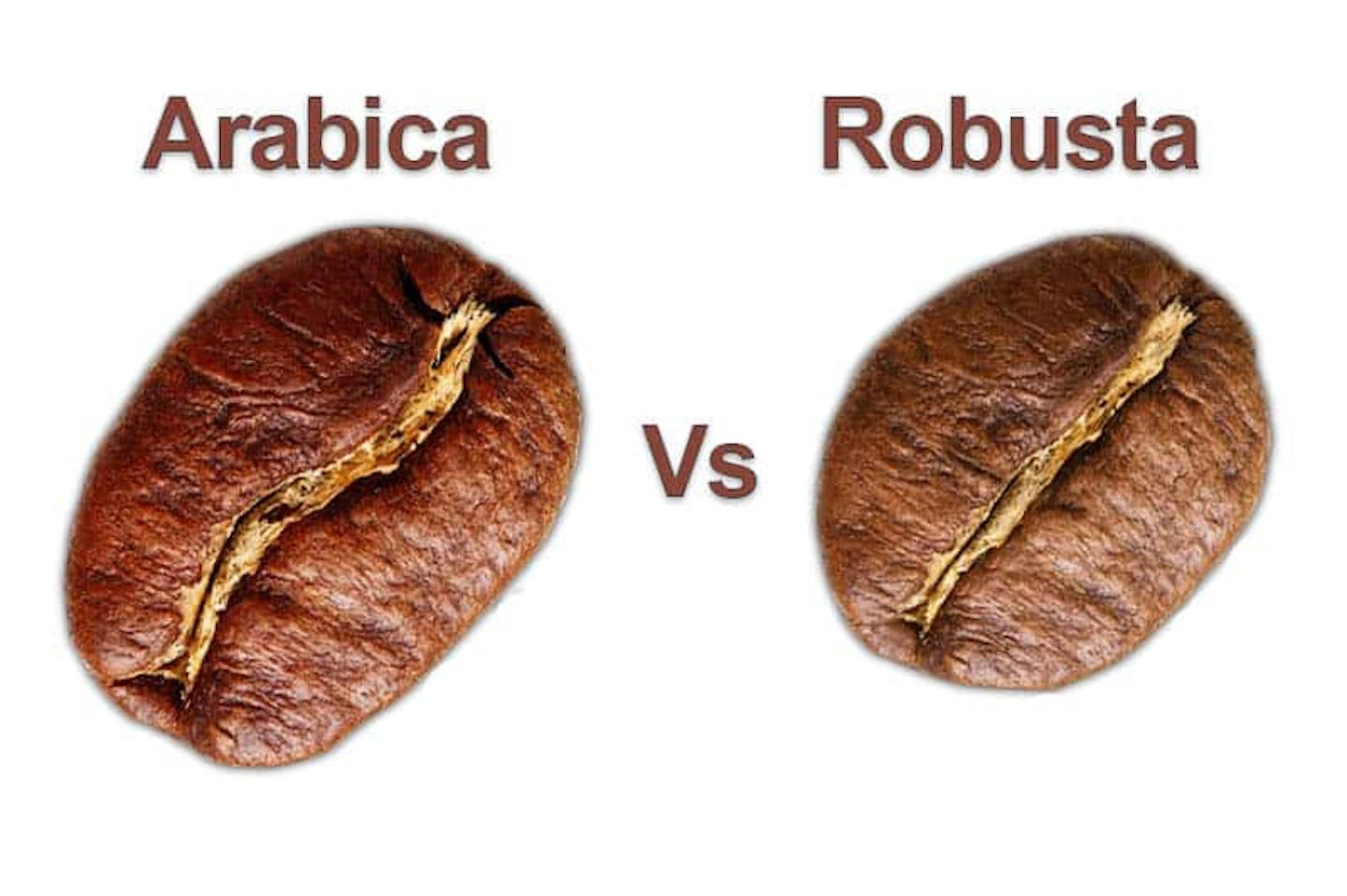Table of Contents
Arabica Vs. Robusta: What's The Difference?
Coffee, the beloved beverage of millions around the world, is created from the beans of the coffee plant. Although there are over 100 different species of coffee plants, the two most common are Robusta and Arabica. Both bring unique flavors, loved by distinct groups of coffee enthusiasts. However, their differences extend beyond flavor, encompassing various aspects that contribute to the diversity and richness of the coffee world.
Origins and History
Arabica
Arabica is the oldest and most popular coffee species worldwide. Believed to originate from Ethiopia, Arabica was first cultivated in the highlands of Ethiopia before spreading globally through trade routes.

According to legend, a shepherd discovered the alertness-inducing properties of Arabica coffee beans when he noticed his sheep becoming more energetic and lively after consuming the coffee cherries. Since then, this coffee species has been widely cultivated and developed.
Robusta
The name Robusta reflects the strength and high resistance of this species. Robusta originates from Central Africa and was discovered in the 19th century. Compared to Arabica, Robusta is more resilient, less affected by pests, and better adapted to hot, humid climates.
Robusta was widely planted when Arabica coffee farms were devastated by a fungal disease epidemic in the late 19th century. Thanks to its better resistance, Robusta became an important alternative.
Plant Characteristics
Arabica
Arabica is considered a more demanding coffee species. It requires cool climates, high humidity, and fertile soil to thrive. Arabica is typically grown at altitudes between 600 and 2000 meters above sea level.
Arabica plants grow between 3 to 5 meters tall, with small, smooth, dark green leaves.
Ripe Arabica cherries are dark red or purple, containing two coffee beans inside.
Arabica plants need shade to develop optimally.
Robusta
Robusta plants are easier to cultivate, tolerating heat and drought well. They can grow at lower altitudes, from 200 to 800 meters.
Robusta plants can reach heights of 6 to 10 meters, with larger, rougher leaves compared to Arabica.
Ripe Robusta cherries are dark red or black, containing one large coffee bean inside.
Robusta has a higher yield than Arabica, but its beans are typically smaller.
Flavor and Structure

Arabica
Arabica coffee is renowned for its delicate and diverse flavors. It has a sweet, slightly acidic taste with occasional mild bitterness.
Arabica's flavor is often described with notes of fruits, caramel, chocolate, and nuts.
The texture of Arabica is usually smooth and lighter compared to Robusta.
Arabica contains lower caffeine content, around 1.2% of its dry weight.
Arabica beans are slightly elongated, oval-shaped with a deep S-shaped groove.
Robusta
Robusta has a strong, bold flavor that is sometimes bitter. It is often described with woody, peanut, and nutty notes.
Robusta's flavor is less diverse than Arabica but offers a robust and deep experience.
The texture of Robusta is typically denser and fuller.
Robusta has a higher caffeine content, around 2.2% of its dry weight.
Robusta beans are smaller, rounder, with a straight groove.
Arabica vs. Robusta can also be easily distinguished by color. When roasted at the same temperature, Arabica beans are always lighter than Robusta beans due to their denser structure, resulting in less expansion and lighter color.
Production Process

Arabica
The production process of Arabica coffee is meticulous and elaborate. Key steps include:
Harvesting: Ripe coffee cherries are handpicked or machine-harvested, ensuring only fully ripe cherries are collected.
Depulping: The cherries are depulped using wet or dry methods.
Drying: Coffee beans are dried to achieve the appropriate moisture content.
Roasting: Coffee beans are roasted at high temperatures to develop their characteristic flavor and color.
Grinding: Coffee beans are ground into fine powder for brewing.
Robusta
The production process of Robusta coffee is like Arabica but generally simpler and less elaborate. Key steps include:
Harvesting: Robusta cherries are often machine-harvested.
Depulping: The wet method is commonly used for depulping.
Drying: Coffee beans are dried using heat or sunlight.
Roasting: Robusta beans are typically roasted at higher temperatures to create a bold flavor.
Grinding: Robusta beans are ground into powder for brewing.
Popularity and Usage
Arabica
Arabica accounts for about 60-70% of the world's coffee production and is considered premium coffee. Its delicate, diverse, and complex flavors have attracted many coffee lovers globally.
Arabica is often used to brew espresso, cappuccino, and black coffee. High-quality Arabica beans are usually sold separately at higher prices.
Robusta
Robusta accounts for about 30-40% of the world's coffee production and is often used in instant coffee and traditional drip coffee. With its strong and bitter flavor, Robusta is suitable for those who enjoy a bold coffee experience.
Additionally, Robusta is used in instant coffee and espresso blends to enhance flavor and intensity.
Comparing Arabica and Robusta
Factor | Description |
Flavor | Arabica typically has delicate, complex, and diverse flavors, with notes of fruit, caramel, and chocolate. In contrast, Robusta has a strong, bold, and sometimes bitter flavor, with woody and nutty notes. |
Caffeine | Arabica has a lower caffeine content (about 1.2%) compared to Robusta (about 2.2%). This explains why Robusta often provides a stronger alertness effect after consumption. |
Price | Arabica beans are generally more expensive than Robusta due to the more meticulous production process and higher quality. Arabica is often regarded as premium coffee, while Robusta is commonly used in mainstream coffee products. |
Popularity | Arabica dominates the global coffee market, accounting for 60-70% of production. Robusta makes up the remaining 30-40%. The popularity of Arabica is reflected in the broader consumer recognition and preference for this coffee type. |
Best Time to Buy Coffee for Optimal Flavor

Coffee is typically harvested once a year, with the cherries ripening over about three months. Due to the single harvest season, coffee flavors diminish towards the end of the year as the beans age.
For instance, Vietnamese coffee grown in Gia Lai and Kon Tum is usually harvested from October to December. After harvesting, the beans undergo processing and storage for about 2 months to stabilize the flavor before being sold. Thus, it takes nearly 4 months, around March to April, before we can enjoy fresh coffee.
Understanding this process helps us not to be surprised by the declining quality of coffee towards the end of the year and provides useful information on the best time and place to buy coffee.
Conclusion
These are some key differences between the two most popular coffee types in the world: Arabica and Robusta. Although both bring distinctive and unique flavors, each type has specific characteristics that cater to different consumer preferences and needs.
Understanding the differences between Arabica and Robusta not only helps you choose the coffee that best suits your taste but also allows you to appreciate the effort and production processes behind each delicious cup of coffee. Let's explore the diverse and rich world of coffee by enjoying Arabica and Robusta, two wonderful coffee varieties!





